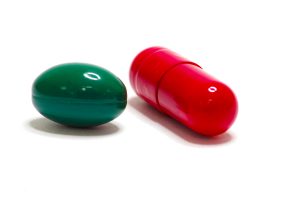Vaginal yeast infections occur when there is an excess of a fungus called candida in your body. There are several kinds of healthy bacteria and fungus present in vaginas. However, when candida multiplies too much, it can cause an infection. Yeast infections are widespread amongst most women and can be very uncomfortable, although usually not serious. This article explains how to use yogurt for yeast infection treatment.
Some common symptoms of candida:
- Itching
- Burning
- Soreness
- Irritation
- Swollen vulva
- Red and swollen vagina
- Thick, odorless discharge
Yeast infections are treatable with over-the-counter antifungal suppositories and creams.
However, many women choose to cure yeast infections with alternative home remedies, such as yogurt.
Using Yogurt for Yeast Infection Treatment
Although yogurt is not a proven cure for yeast infections, many women choose this method over suppositories and creams and find it a very effective alternative treatment for yeast infections.
Yeast infections appear when the body’s normal pH levels are disturbed, and the lactobacillus bacteria in yogurt helps restore normal pH levels.
According to the U.S National Library of Medicine, Lactobacillus is “good” bacteria present in our digestive system, commonly consumed for gut health. However, its use for treating vaginal infections has not yet been proven.
Can Eating Yogurt Make Yeast Infections Go Away?
Although eating yogurt probably won’t serve as an immediate solution for your yeast infection, several studies prove that including yogurt as a part of your diet can lower your risk of developing a yeast infection.
Eating a daily serving of yogurt daily can help balance your body’s pH levels and other health benefits yogurt brings. We recommend applying directly to the affected area for faster yeast infection relief.
The more natural the yogurt, the better. Like all fungi, candida feeds off sugar, so avoid yogurts with added sugar or sweeteners.
Plain greek yogurt is usually the safest option.
Read the label and see if the yogurt has lactobacillus in its ingredient list, as this is the main ingredient we’re looking for.
What Yogurt Ingredients Help with Yeast Infections?
Most yogurts contain a “healthy” bacteria called lactobacillus.
This bacteria can help bring your pH levels back to normal by restoring acidity into the vagina, limiting the yeast’s ability to grow.
Additionally, lactobacillus releases hydrogen peroxide, which helps combat the yeast present in the vagina.

How to Use Yogurt for Yeast Infections
Direct application is the best way to use yogurt for yeast infection.
Inserting yogurt into the vagina might be tricky, but there are a few common strategies used to make it easier:
- First, use your fingers to insert one or more scoops into the vagina.
- Next, fill an (unused) tampon applicator with yogurt and insert it into the vagina.
- Finally, use an old applicator from an antifungal cream. Ensure you wash well with soap and warm water before using.
- First, freeze the yogurt in a compact shape (a tampon applicator, ice cube tray, etc.)
- Ideally, you should apply yogurt daily for about one hour until the symptoms completely disappear.
As mentioned previously, if you are prone to getting yeast infections, it is also recommended you incorporate yogurt as part of your regular diet.
Why Use Yogurt to Treat Yeast Infections?
There are multiple reasons women choose to treat their yeast infections with yogurt. After multiple uses, some women develop resistance to over-the-counter antifungal creams and suppositories.
In other cases, some women choose yogurt over antifungal treatments because they are worried about their possible side effects.
Using yogurt is an easy, accessible, and effective remedy that is sometimes more convenient and inexpensive than medical treatments.
As an added benefit, the cool sensation when applying the yogurt can help soothe the itchiness caused by candida.
How Long Does it Take to Work?
This method could take around a week to eliminate the symptoms. Therefore, it would be best to use it daily until you notice a considerable improvement, and we recommend continuing the application until all symptoms have stopped completely.
Risks of Using Yogurt for Yeast Infection Treatment
Some physicians do not agree with this method for treating yeast infections, claiming that there isn’t enough proof that this is an effective treatment.
The main risk of using yogurt to treat a yeast infection is not managing to soothe your discomfort with it.
Although yogurt could help eliminate a yeast infection, if you have severe symptoms, it’s possible yogurt won’t be enough to soothe them immediately, unlike most traditional antifungal treatments.
Please note that you should only use plain yogurt to control yeast infections. If the yogurt you use has added sugar or sweetener, it will likely worsen your condition as fungi thrive when given sugar.
Tips on Yogurt & Yeast Infections
Ensure you apply a thick layer to the vaginal skin. You want to make sure everything is covered. Extending coverage beyond the irritated area would be recommended since fungus could be present in places you can’t see or feel.
If you freeze the yogurt in an ice cube tray or tampon applicator and then insert it, it has an extra soothing effect.
To learn more about vaginal health, Alyssa Dweck’s book The Complete A to Z for your V is an excellent place to start.

Frequently Asked Questions
Each body responds differently; this method might not completely cure your yeast infection. Still, if it is successful, it could take around a week, with daily applications of approximately 1 hour.
Eating yogurt will help your gut and bodily health and is recommended to prevent yeast infections, but it might not be enough to eliminate the infection. The recommended method would be applying it directly to the affected area for a faster effect.
Yogurt can help eliminate the overgrowth of candida in your vagina, causing a yeast infection. The lactobacillus bacteria present in most yogurts restore your vagina’s natural acidity.
This prevents candida from growing and will progressively eliminate it. Additionally, applying yogurt directly to the affected area can soothe irritation and itching. Direct application is the most recommended method to cure a yeast infection with yogurt.
However, introducing plain yogurt into your diet can help reduce the risk of infections.
Although not a proven method to cure yeast infections, many women have found that applying yogurt to the affected area and consuming more yogurt can help eliminate it. You must apply the yogurt correctly and use plain yogurt with no added sugar.
This method is not recommended. Instead, you can insert the yogurt with your fingers or use a new tampon applicator filled with yogurt to insert it into your vagina. Alternatively, you could freeze yogurt into a small format (e.g., an ice cube tray) and insert it.
No, yogurt contains a “healthy” bacteria that is called lactobacillus. Like all fungi, the fungus that causes yeast infections is called candida (yeast) and does not thrive in an acid environment. Lactobacillus (present in yogurt) restores the acid pH of your vagina and helps eliminate the overgrowth of candida.
Inserting yogurt into your vagina to treat a yeast infection is safe if it is done responsibly. Always wash your hands or any elements used to insert the yogurt before using them. Also, make sure you are using plain yogurt with no added sugar.
Incorporating yogurt into your diet can help keep your body’s pH levels stable, which can help prevent yeast infections. Many women swear by a daily application of plain yogurt to keep their pH levels healthy and stable, therefore minimizing the risk of infection.
However, external elements such as antibiotics, pregnancy, uncontrolled diabetes, an impaired immune system, and hormone therapy or oral contraceptives could trigger a yeast infection even if you consume yogurt regularly.





